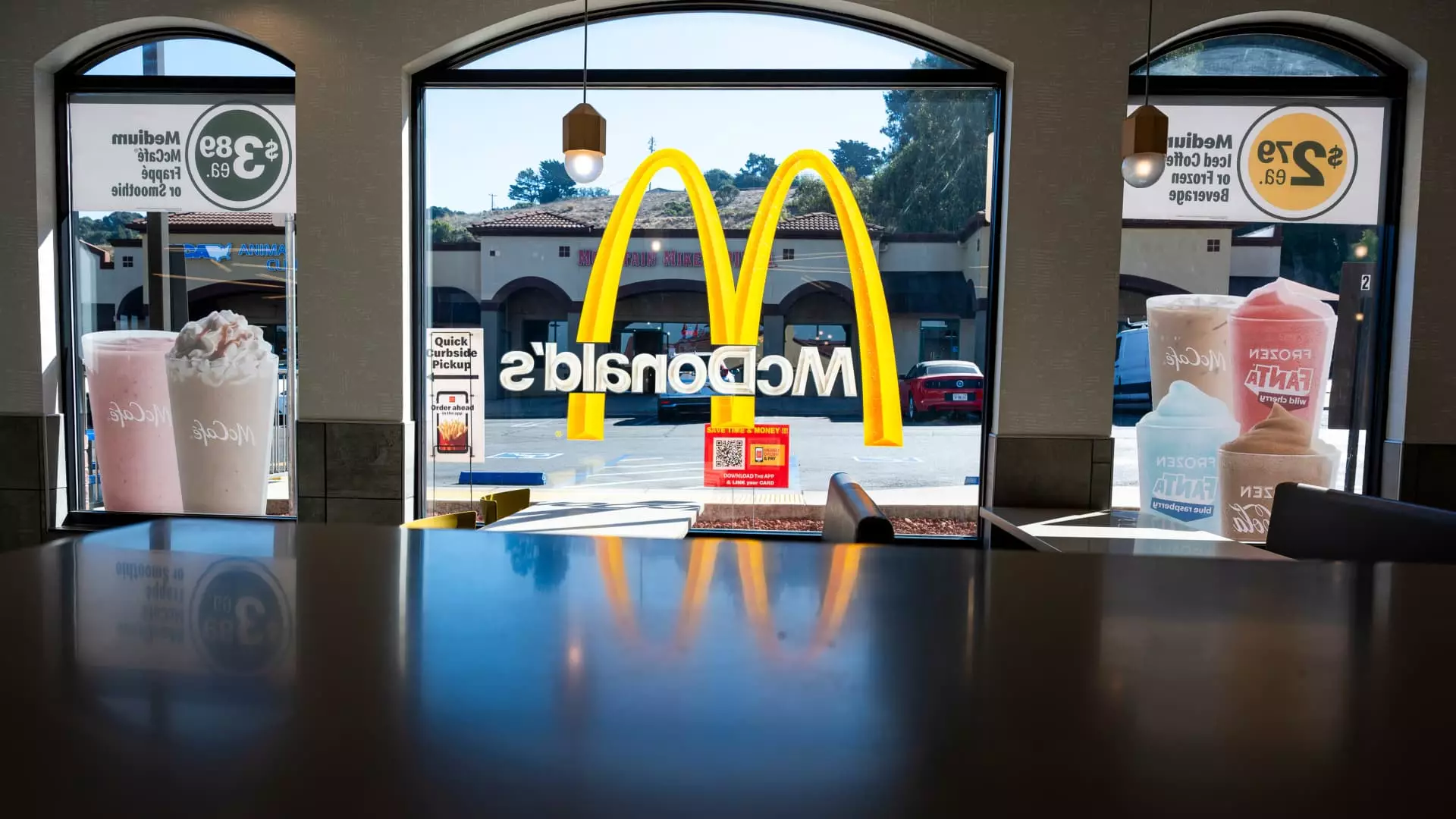The restaurant industry has traversed an arduous path over the past year, and as executives look ahead, there is a collective sense of relief in anticipation of 2025. Amid mounting challenges, such as soaring bankruptcy filings and declining customer traffic, industry leaders like Kate Jaspon, CFO of Inspire Brands, express a desire to leave 2024 behind. The reality is stark: bankruptcy filings have surged by over 50% compared to the same timeframe last year. Factors such as declining same-store sales for major chains, including McDonald’s and Starbucks, paint a bleak picture. Yet, amidst this adversity, signs of recovery have begun to emerge, indicating that the resilience of the restaurant sector should not be underestimated.
Recent data offers a flicker of optimism. According to Revenue Management Solutions, traffic in fast-food restaurants experienced a 2.8% increase in October compared to the same month last year. This positive trend counters the earlier forecasts and provides tangible evidence that the industry is beginning to rebound. Companies such as Burger King’s parent company, Restaurant Brands International, reported growing same-store sales, signalling that consumer appetite may be on the mend. Additionally, the recent trend of falling interest rates is a pivotal factor that may catalyze further growth, as it makes financing new locations less costly. For many chains, the adverse effects of high-interest rates were somewhat cushioned due to pandemic recovery momentum, yet the current environment presents opportunities for robust expansion.
CFO Katie Fogertey of Shake Shack articulated a fascinating aspect of consumer behavior related to interest rates and spending patterns. The psychological underpinnings of consumer confidence play a significant role in the restaurant business, even if they don’t directly correlate with actual spending behavior might suggest. Lower interest rates typically engender a sense of financial freedom, potentially driving individuals to spend more at restaurants, including on items priced at $5 or more. Shake Shack’s record of consecutive same-store sales growth serves as a testament to this phenomenon, as customers have shown resilience despite being confronted with inflationary pressures.
The prospect of initial public offerings (IPOs) seems to be on the horizon, as growing optimism surrounds the valuations of restaurant companies. Dining establishments eyeing public markets are hopeful that favorable conditions will emerge soon. Damon Chandik of Piper Sandler highlighted that while the momentum is not yet robust, there is potential for several restaurant IPOs in the first half of next year. The remarkable recovery of Cava’s stock post-IPO, despite its isolated success, reveals a more complex landscape where broader market uncertainties dampen enthusiasm for many prospective candidates. Panera Bread’s objectives also remain in the balance, as it seeks to finalize its public offering amidst a cautious market climate.
Despite growing optimism about the future, significant hurdles continue to loom for the restaurant industry. Fundamental challenges, including fluctuating costs and aggressive price competition, persist as threats to profitability. Portillo’s CFO Michelle Hook warned that headwinds would likely persist into next year. With fast-casual chains like Portillo’s facing declining sales and carefully steering clear of deep discounting, the competitive landscape could see ongoing volatility as alternative strategies emerge. McDonald’s has already announced plans for an expanded value menu, reaffirming the price wars that threaten margins across the industry.
As executives gear up for 2025, they must maintain a balance between optimism for potential recovery and a sober recognition of the ongoing challenges within the macroeconomic context. The gradual recovery of consumer sentiment is coupled with a demographic grappling with years of economic shifts, particularly the rising cost of living. While the specter of recession seems less imminent, the slow rebound in spending habits indicates that the path to full recovery may be more prolonged than anticipated.
The restaurant industry’s landscape in 2025 offers a mixed bag of hopes entwined with realities. As executives brace themselves to pivot and adapt, the coming year could mark a turning point, provided the industry can harness the promising trends while navigating the delicate and evolving consumer dynamics effectively.

